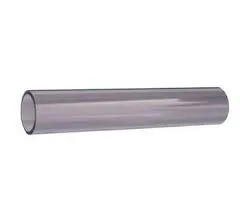Oct . 21, 2024 18:49 Back to list
High-Quality PVC and PPR Pipes and Fittings for Your Plumbing Needs
Understanding PVC and PPR Pipes and Fittings A Comprehensive Guide
In the modern world of construction and plumbing, the choice of materials is crucial for the durability, efficiency, and overall quality of water supply systems. Among several options available, PVC (Polyvinyl Chloride) and PPR (Polypropylene Random Copolymer) have emerged as two of the most popular materials for pipes and fittings. Each comes with its unique characteristics, advantages, and applications, making them suitable for different plumbing needs.
What are PVC and PPR Pipes?
PVC Pipes PVC is a synthetic plastic polymer that has been widely used for many decades. It is created through the polymerization of vinyl chloride monomer, resulting in a lightweight yet sturdy material. Due to its excellent corrosion resistance and durability, PVC pipes are commonly used for drainage, sewage systems, and potable water installations. The pipes can be found in various sizes and classes, making them versatile for residential, commercial, and industrial applications.
PPR Pipes On the other hand, PPR is a type of thermoplastic that comes from polypropylene. It is characterized by its high resistance to heat and pressure, making PPR pipes ideal for hot and cold water supply systems. Their ability to withstand high temperatures allows PPR pipes to be employed in various applications, including heating systems and hydration networks. Moreover, PPR pipes are resistant to corrosion and do not promote the growth of algae or bacteria.
Advantages of PVC Pipes and Fittings
1. Cost-Effective One of the primary attractions of PVC pipes is their affordability. They are generally less expensive than many other piping materials, making them a preferred choice for budget-conscious projects.
2. Lightweight PVC pipes are exceptionally lightweight, which simplifies handling and installation. This characteristic reduces labor costs and time spent on projects.
3. Corrosion Resistance PVC is inherently resistant to various chemicals and corrosion, ensuring that the pipes maintain their integrity even when exposed to harsh environments.
4. Low Maintenance Unlike metal pipes, PVC pipes require minimal maintenance, and their lifespan can exceed 50 years under proper conditions.
pvc ppr pipes and fittings

Advantages of PPR Pipes and Fittings
1. High Thermal Resistance PPR pipes can withstand temperatures up to 95°C (203°F) while maintaining pressure, making them perfect for hot water supply systems.
2. Long Lifespan With proper installation and care, PPR pipes can last for over 50 years, often outlasting other piping materials.
3. Eco-Friendly PPR is a recyclable material, which contributes to its ecological advantage over other plastics. It can be reused in various applications, minimizing environmental impact.
4. Ease of Installation PPR pipes can be joined using a heat fusion method, creating a seamless and leak-proof connection that enhances the system's reliability.
5. Antibacterial Properties The smooth inner surface of PPR pipes prevents the formation of bacteria and fungi, promoting healthier water supply systems.
Choosing Between PVC and PPR Piping
When deciding between PVC and PPR pipes and fittings, it is essential to evaluate the specific requirements of your project. PVC is an excellent choice for low-pressure applications, external drainage, and where cost is a significant factor. In contrast, PPR is ideal for high-temperature applications, such as hot water systems, and offers superior durability in demanding environments.
In conclusion, both PVC and PPR pipes and fittings have their distinct advantages and applications in plumbing and construction. Homeowners, contractors, and engineers must consider several factors, including the environment, budget, and specific project needs when selecting the appropriate materials. Ultimately, understanding the properties of PVC and PPR can lead to informed decisions, ensuring that plumbing systems are efficient, durable, and cost-effective for years to come.
-
High-Quality PPR Pipes and Fittings Durable ERA PPR & PVC PPR Solutions
NewsJul.08,2025
-
Black HDPE Cutting Board - Durable, Non-Porous & Food Safe HDPE Plastic Cutting Board
NewsJul.08,2025
-
High-Quality CPVC Panel Durable HDPE & PVC Panels Supplier
NewsJul.08,2025
-
Double PE Welding Rod Supplier - High Strength, Durable & Versatile Welding Solutions
NewsJul.07,2025
-
High-Quality PVC-O Pipe Supplier Durable 75mm PVC Pipe & Connections Leading PVC Pipe Company
NewsJul.07,2025
-
HDPE Drainage Pipe Supplier – Durable & Corrosion-Resistant Solutions
NewsJul.06,2025

